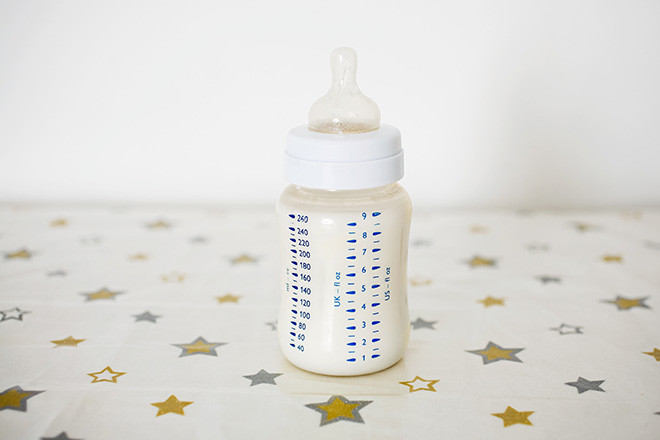 A photo: Getty Images Breastfeeding is an essential step in the physical and psychological development of an infant. But sometimes, due to objective or subjective reasons, it becomes necessary to transfer the child to a mixed or artificial diet. And then the parents have to make an important decision: what kind of mixture to choose for a newborn. Despite active research, it is almost impossible to repeat the unique composition of the mother. After birth, between mother and baby there is a strong connection, and breast milk is “adjusted” to the physiological needs of the child. Such an individual approach in production is impossible to achieve. Therefore, the main criterion in assessing the quality of baby food becomes the content in the mix of the set of the most important components of breast milk: proteins, fats, carbohydrates, minerals and vitamins. If the mother has doubts about the adequacy of the infant’s nutrition or for some reason she is forced to refuse feeding breastfeeding, it is not necessary to introduce artificial nutrition into the diet of the newborn and to refer to the experience of other families. Today, dairy formula manufacturers offer the widest range of baby food, including significantly different prices. However, the price when choosing a mixture is not a determining factor, and an inexpensive mixture may also be the best food for a newborn. The key point in the proper selection of food is the need of a child's body for certain components or, on the contrary, their intolerance. Therefore, the transfer of the child to fully or partially artificial nutrition requires consultation with a pediatrician. He will assess the physical condition of the baby, analyze the possible risks and, based on this, orient what mixture is best for the newborn. If it is necessary to introduce artificial nutrition in the first days of the baby’s life, the choice of specialists most often falls on adapted milk formulas for newborns. They are easily absorbed by the child's body due to demineralized whey and are as close as possible to women's breast milk. Pay attention to the additional components in the mixture: bifidobacteria, lysozyme, lactulose, taurine, pre- and probiotics, nucleotides, fatty acids and others. These elements contribute to the better functioning of the digestive tract, allow the child to develop properly and gain weight.
A photo: Getty Images Breastfeeding is an essential step in the physical and psychological development of an infant. But sometimes, due to objective or subjective reasons, it becomes necessary to transfer the child to a mixed or artificial diet. And then the parents have to make an important decision: what kind of mixture to choose for a newborn. Despite active research, it is almost impossible to repeat the unique composition of the mother. After birth, between mother and baby there is a strong connection, and breast milk is “adjusted” to the physiological needs of the child. Such an individual approach in production is impossible to achieve. Therefore, the main criterion in assessing the quality of baby food becomes the content in the mix of the set of the most important components of breast milk: proteins, fats, carbohydrates, minerals and vitamins. If the mother has doubts about the adequacy of the infant’s nutrition or for some reason she is forced to refuse feeding breastfeeding, it is not necessary to introduce artificial nutrition into the diet of the newborn and to refer to the experience of other families. Today, dairy formula manufacturers offer the widest range of baby food, including significantly different prices. However, the price when choosing a mixture is not a determining factor, and an inexpensive mixture may also be the best food for a newborn. The key point in the proper selection of food is the need of a child's body for certain components or, on the contrary, their intolerance. Therefore, the transfer of the child to fully or partially artificial nutrition requires consultation with a pediatrician. He will assess the physical condition of the baby, analyze the possible risks and, based on this, orient what mixture is best for the newborn. If it is necessary to introduce artificial nutrition in the first days of the baby’s life, the choice of specialists most often falls on adapted milk formulas for newborns. They are easily absorbed by the child's body due to demineralized whey and are as close as possible to women's breast milk. Pay attention to the additional components in the mixture: bifidobacteria, lysozyme, lactulose, taurine, pre- and probiotics, nucleotides, fatty acids and others. These elements contribute to the better functioning of the digestive tract, allow the child to develop properly and gain weight. Photo:Getty ImagesThe formula should be introduced gradually so that the child's body can adapt to the new diet. As a rule, the transition to formula takes 7-14 days, starting with the introduction of 30 grams of formula at each feeding. Each subsequent day, the dose is increased by the same amount until the new formula reaches the recommended age norm. Such a gradual change in nutrition allows parents to assess the reaction of the child's body. During the period of adaptation to milk formula, newborns may experience constipation or diarrhea, bloating, colic, regurgitation and skin rashes. If the symptoms persist, you should consult a doctor and clearly describe the symptoms that bother the child in order to select a specialized therapeutic formula. Such mixtures include hypoallergenic, lactose-free, fermented milk, anti-reflux and others. Their main action is aimed at correcting problems associated with digestion or assimilation of food components. Only the baby himself can choose the best formula for himself, and the task of parents is to monitor the reaction of the child's body as closely as possible and not to change the formula without an apparent reason and consultation with a specialist in breastfeeding. It is also useful to know:
Photo:Getty ImagesThe formula should be introduced gradually so that the child's body can adapt to the new diet. As a rule, the transition to formula takes 7-14 days, starting with the introduction of 30 grams of formula at each feeding. Each subsequent day, the dose is increased by the same amount until the new formula reaches the recommended age norm. Such a gradual change in nutrition allows parents to assess the reaction of the child's body. During the period of adaptation to milk formula, newborns may experience constipation or diarrhea, bloating, colic, regurgitation and skin rashes. If the symptoms persist, you should consult a doctor and clearly describe the symptoms that bother the child in order to select a specialized therapeutic formula. Such mixtures include hypoallergenic, lactose-free, fermented milk, anti-reflux and others. Their main action is aimed at correcting problems associated with digestion or assimilation of food components. Only the baby himself can choose the best formula for himself, and the task of parents is to monitor the reaction of the child's body as closely as possible and not to change the formula without an apparent reason and consultation with a specialist in breastfeeding. It is also useful to know:

Making Money with Desserts: Success Stories
Evgeniya Polischuk (Fedutinova) instagram:@evgeniyafedutinovavk.com/janeshomebaking– It all started with baking for family and friends. Gradually, I started posting photos of my baked goods on Instagram – and orders started coming in. I made my first custom-made cake on October 13, 2014, and a little earlier I started making macaroons and cupcakes. You could say that the business “found me”, I am very […]

Soups are cold recipes with photos
Cold cucumber soup with yogurt and lemonsorbet from the chef of the restaurant La Taverna Alexander Zhurkin Photo: Getty Images Ingredients: Plain yoghurt – 125 g Cucumber – 150 g Lemon/lime sorbet – 50 g Cocktail shrimp – 24 g Fresh ginger juice – 1 g Lime juice – 5 g Fresh orange juice – 5 g Parsley – 1 g Pink pepper – 1 g Watercress – […]

barbeque kebab
Pork tenderloin in glaze Photo:Dmitry Bayrak/dbstudioPreparation time: 20 minutes + marinating time.Calories: 454 kcal per serving.For 4 servings: 4 pork tenderloins (approximately 300 g each), 1 onion, 2 cloves of garlic, 1 tsp. lemon zest, 1 tsp. lemon juice, a pinch of ground cumin, coriander and turmeric, 1 tbsp. vegetable […]

Pierre Duacan: dietary recipes: Ducane diet
Beetroot soup Photo:Season’S, Luxury Hotels RepresentationYou will need:· Boiled beetroot – 60 g· Fresh cucumbers – 20 g· Red radish – 20 g· Green onions – 10 g· Egg – 1 pc.· Drinking mineral water – 200 g· Salt – 1 gPreparation:· Boil the egg and beetroot.· Grate the cucumbers, radish and part of the beetroot. Put everything […]





